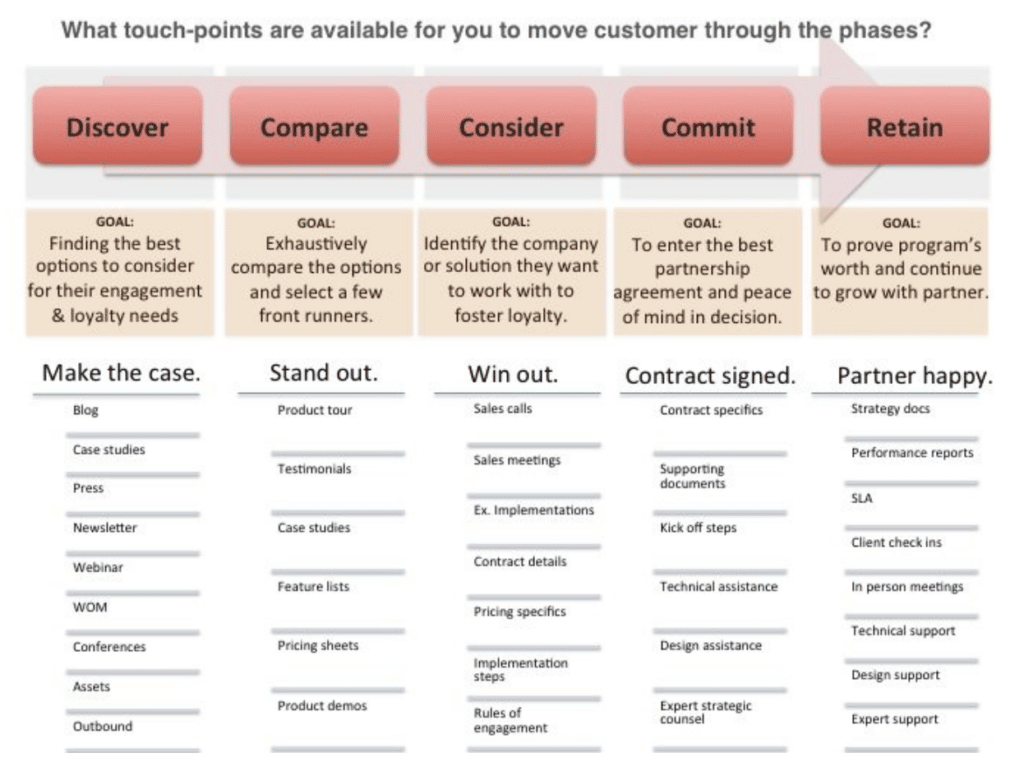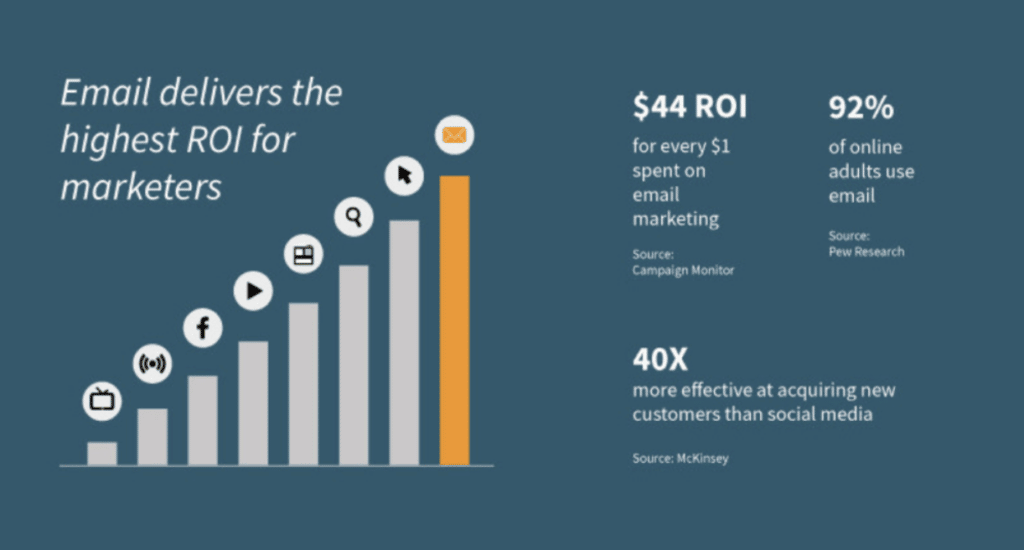Revenue growth and attracting the right audience to your products/services is top of mind for any business that is wanting to scale while also building awareness. While it is true that digital marketing offers promising opportunities for growth, it also takes more than just throwing up a social media update. In order to ensure the success of your digital marketing campaigns, you have to align executions with overall business objectives too.
Further, the digital world is dynamic and constantly evolving, which means your marketing strategies have to be adaptable. In today’s blog post, I’ll provide some tips for creating a successful digital marketing campaign, but first, let’s look at some stats:
- Using visual content like videos on landing pages can improve conversions by 86%.
- Inbound marketing costs 62% less per lead than traditional, outbound marketing.
- Companies that blog get 55% more web traffic.
- 57% of businesses have acquired a customer through their company blog.
- 78% of Internet users conduct product research online.
- 50% of search queries are 4 words or more.
- More than 35% of B2B marketers surveyed have established a lead nurturing strategy.
- 63% of marketers say their biggest content challenge is driving traffic and generating leads.
- 98% of sales reps with 5000+ LinkedIn connections meet or surpass sales quotas.
- 74% of conversion rate optimization programs increase sales.
Overall, having a solid strategy that is supported by tactics that will help produce the desired results you’re after should be top of mind. To be more specific, I’ve narrowed down a few digital marketing initiatives you should focus on to amplify lead generation efforts as well as revenue growth. Let’s dive in…
Go full circle with content marketing
Developing and distributing your content assets is great, however, being more strategic with where each piece of content falls based on the lifecycle stages your prospective customers is going to be more meaningful.
An effective content marketing strategy is mapped according to the sales funnel, where each piece of content is customized to best match the customer’s needs. Here’s a break down of the purchase journey into three stages including the best type of content for each stage:
- Awareness Stage: This is the stage when 81% of customers are conducting research. They’re searching for information and educational resources to solve a problem or answer a question. One of the best ways to engage them at this stage is to produce content that is educational or entertaining, such as blog posts, educational webinars, comprehensive guides, email newsletters, how-to videos, ebooks, and whitepapers.
- Evaluation & Consideration Stage: This middle-funnel stage is where prospects complete more specific research about whether or not your product or service is right for them, which is why it’s known as the evaluation or consideration stage. This is where you need to convince them that your solutions are the best fit. You can do this with content that helps establish trust and nurture the growing relationship – this is the time to show that you are the best in your industry. Content such as product webinars, expert guides, product comparisons, case studies, FAQ, data sheets, and testimonials work well here.
- Purchase Stage: This is the stage where prospects are making a purchase decision. They are trying to figure out exactly what it would take to buy from your company in particular. This is where prospects just need that final nudge to convert. The most impactful content here includes free trial offers, live demos, guides to getting started, special offers, consultation, and estimates.
Every business has a unique sales funnel – your industry may see prospects spending longer in the one particular stage, and you should adjust your content marketing strategy accordingly. Regardless of your company’s specific buyer’s journey, the most important element is that you understand how your audience searches and purchases. If you know your audience, develop your industry sales funnel, and map out your content strategy. Doing so will put you on the path to increasing the ROI of your content marketing efforts.

Use social media to create conversations and connections
Just as you would want to lead with valuable content, the same goes with how you participate in conversations happening within your industry. This means that you are commenting on relevant posts that are happening on social media. In other words, you are providing your insights and inserting your thought leadership.
Knowing that social media has a 100% higher lead-to-close rate than outbound marketing should also show you why the importance of human interaction and connection is. You know you solve a specific problem, identify those who are facing the challenges of that problem, and be a part of their conversations.
Here are some recommendations to consider:
- Help-specific terms: Words like “help,” “recommend,” “tips,” and “ideas,” indicate that a prospect is looking for answers that could guide them toward a sale.
- Industry terms: Terms that are specific to your industry or product demonstrate a level of awareness that suggests some degree of buying intent.
- Location-specific terms: If your business serves a specific geography, like a city, state, or region, looking out for references to your location may help you discover buyers in your area.
- Transactional terms: Words like “sale,” “price,” and “cost,” suggest that a prospect is ready to buy but has a specific budgetary concern.
- Brand mentions: It pays to know when prospects are specifically discussing your brand. This could be a good point to jump into the conversation and provide answers.
Point is, there are a ton of different ways to go about being a part of the conversations that are happening within your industry, but you have to continue to be helpful. By doing so you’ll find that it’ll be easier to actually build meaningful relationships with prospective customers.
Leverage email marketing to increase engagement
Drip campaigns are scheduled marketing emails that are sent automatically by your email client after a customer hits a particular trigger. These campaigns start with a prospecting email, then create leads, and finally generate repeat customers, using the sales funnel. You may end up with a 98% conversion rate for qualified leads as a result of running a drip campaign.

Triggers for drip campaigns can take a few forms. One may be a request for a demonstration, while another may be a new subscriber. Other triggers may be a resource download or the recipient clicking on a link in the email body. Once the trigger is recorded by your email client, a follow-up message is sent.
If you pair your drip campaign with your marketing strategy, there are a few benefits you’ll see, such as the ability to:
You can also set up triggers in response to passive customer behavior, like not opening your last emails, not using your service for a while, or when they have downloaded a product but not the tutorial or other related resources. This depends on your business model, but if you’re concerned with customer retention, this can help gently nudge people back toward your company.
- Give your customers valuable insights about your industry
- Speed up the processing of leads through the sales funnel
- Offer engaging content and customer interaction
- Create actionable warm leads for your sales team
- Reward loyal customers with special deals or inside information
- Re-engage customers who haven’t interacted with your business recently.
Optimize and test your media efforts
Nothing is going to be more detrimental to your marketing efforts than just letting your media plan run on cruise control. What I love so much about having a legit media plan in place is that you literally have the ability to collect data almost immediately. You can see simple things like which targeting is working best well into the actual messaging itself.
Here are key things to keep in mind:
- Push to have at least 50+ different creative variations that span from images, videos, messaging, CTAs, etc.
- Implement CRO for the landing pages you are driving traffic to. Then A/B test to see which yields the most conversions, i.e., someone filling out a form or requesting to get in touch.
- Test but do so by isolating variables and not doing everything all at once. That way, you can really understand what’s working.
- Optimize consistently so you don’t waste your marketing dollars on avenues that are not yielding any real results.
Drive decisions with data + technology
Analytics are at the heart of decision making for both sales and marketing teams. For example, 74% of companies who didn’t exceed revenue goals had no idea what their lead, visitor, MQL, or sales opportunities were. Clearly, the less companies knew about their KPIs, the less likely they were to meet (or exceed) their revenue goals — this data is compounded by the fact that 42% of marketers say that a lack of quality data is their biggest barrier to lead generation.
As such managing all your marketing activities can mean that you are pulling analytics from a lot of different sources, but this doesn’t always guarantee that the data provides a holistic picture of how their marketing efforts contribute to total revenue. For that, you may want to utilize a centralized Customer Resource Management (CRM) system.
A CRM system can be set up to keep customer data and employee actions accessible and up-to-date, which can help you stay connected to customers, streamline your marketing and sales processes, and of course – improve growth and profitability. Data presented by SalesForce has shown that introducing a CRM platform can improve lead conversion and sales by 30%, increase customer satisfaction by 35%, and raise revenue by 25%.
Some key features to consider when choosing tools that will best work for you are:
- Customer Funnel Visualization – Take the guesswork out of the customer journey at all locations in your pipeline and sales funnels. Leverage visual reports to help you see your customer pathways through multiple lenses.
- KPI Monitoring and Analytics – You don’t have to go over-budget to gain an in-depth look at what’s happening on your website and with your campaigns. In fact, a lot of businesses get by with Google Analytics as a starting point before investing in additional analytical tools.
- Lead Analysis – Is every lead worth the same amount of energy and resources? Of course not. Look at which tools best help you assess the value of leads and perform sophisticated lead scoring to help you get specific about where you place your valuable energy and resources.
Wrapping it Up
The key aspects to ensuring that you will be successful with your digital marketing campaigns come down to your ability to set up the right processes, tools, and people. Don’t feel pressured with having to do everything, but be flexible with your approach. With every execution, tie it to the end goal and how it will benefit the business, while also creating a real connection with your target demo.






3 Responses
Hello! The article you shared about How to Setup Your Digital Marketing Campaigns for Success. It is very informative to me as well as to Digital Marketers. Thank you and Keep sharing more!
Hy, the article was too informative and deeply explained to understand the concept of digital marketing campaigns for success. Thanks for sharing keep posting.
Thank you for your best information about measures online marketing strategy to help your business grow. Amazing Article